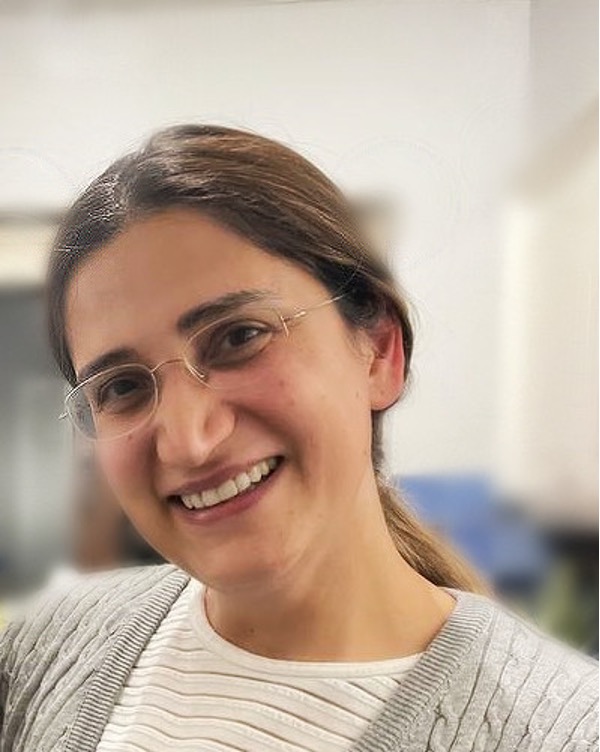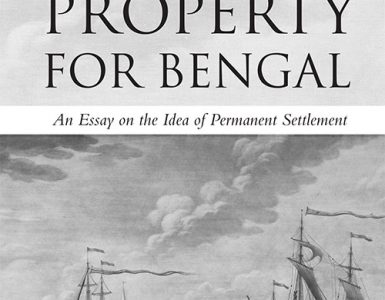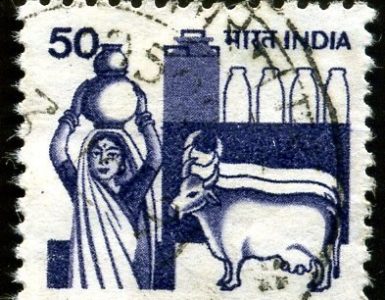Mastoureh Fathi
In the aftermath of Mahsa Zhina Amini’s murder, an ontological question that was asked repeatedly was “Where is home for Iranian migrants is and what significance the homeland has for them?” The atrocities of the Iranian regime that followed this murder, through imprisonment of thousands, torture and execution of those who were arrested soon posed serious questions about identity and how Iranians living outside Iran identified themselves with their country of origin.
Since the 1979 Revolution, Iranian migrants, or what is generically called ‘the Iranian diaspora’ have been portrayed as infidels or spies by the Iranian regime’s officials. This portrayal separated Iranian migrants into groups and individuals, which interestingly also impacted on conducting research with Iranian migrants outside the country (Fathi, 2017). In this short piece, I discuss a new notion of home, facilitated through the virtual world, that is different to a home that migrants make in migration processes and one that is distinctive from a homeland. ‘The virtual home’, here is a shared space of emotions that unite people through sharing similar expressions in the virtual world.
Virtual home as a space of unity, I propose has been the moving motor of the Zan, Zendegi, Azadi (Woman, Life, Freedom) Revolution in 2022. Before moving on to discuss it, I need to differentiate between virtual home and two concepts of home and homeland in migration studies.
Home and homeland
Since the 1979 Islamic Revolution, there have been several waves of emigration from Iran which created a large group of Iranian migrants dispersed in different locations (estimated around 8 million Iranians are dispersed outside Iran globally). This large group of people (equating to a tenth of Iran’s population) make the concept of diaspora an important theoretical and analytical aspect in understanding the current revolution.
The scholarship between home and homeland directs us to three main distinctions between home and homeland: temporality, geography and practice (time, space and action). Whilst home is being seen as a place of present (time) and one that is made ‘here’ (geography), homeland is mostly about the past and one that is ‘there’. Of course, these distinctions are not black and white and the wealth of literature in sociology and geography and in particular the book, Uprooting and Regroundings by Sara Ahmed and her colleagues (2003) show that home can be multidimensional and fluid.
The reason for these distinctions between home and homeland, is that home connotes a larger concept than a house or dwelling which can also include the homeland. Additionally, it is a place of settlement and has material and physical aspects (it has a structure, objects, roof, different rooms, warmth and comfort, etc.), it is also about an idea where one feels a sense of permanency (Fathi 2022) and a place of belonging. Homeland, on the other hand, is referred to a place of origin, a place of birth, a geographical location from where a migrant has departed and to which the person may/not return. So the two have shared characteristics, but ontologically they are different in the literature: the former being favoured in migration studies and the latter in diaspora studies.
To reduce home in migration to the concept of homeland is problematic because home connotes positive feelings that do not correspond with all types of migrants’ experiences of homeland. For those who have no option for a return (see the vast literature on forced migration, in particular Brun and Fábos, 2015), homeland connotes a sense of pain and displacement. Here, homeland here becomes the opposite of home.
But this distinction in Iran, since the beginning of 2022 Revolution, has changed. There has been a united sense of community and of solidarity that has brought Iranians together and given them a shared sense of belonging. Indeed, Yuval-Davis (2006) argues that such a sense of belonging is provoked at the time of crisis. Here the belonging to a homeland became a significant identifier once again. This transformation in feelings towards the homeland has changed the above distinction between home and homeland. But how has this been done?
Virtual home in the making
What has been staggering about this new notion of home was the subversion of homeland from a place of birth to a place that is occupied by brutal forces. Almost every single Iranian migrant I talked to believed that Iran has become an ‘occupied home’: The consensus was that Iran as a home has not lost its significance, but it has become a victim in the hands of the regime.
Imagery of occupied Iran includes increasing inflation, racism faced by migrants living in Iran (mainly Afghan), the destruction of natural resources and endangered wildlife, damage to the historical sites, and distortion of pre-1979 narratives (to name a few). These imageries were combined and contrasted through visual images about glories of the past particularly the economic boom of 1960s and 70s in Iran and juxtaposed to the stark realities of present Iran. Such powerful imagery was even depicted in artworks, music and cartoons. In this way, Iran as a homeland, became present in the lives of Iranian migrants, and the geographical distance it had from the countries where migrants live, was compensated by physical gatherings organised outside the country. For example, on 22 October 2022, tens of thousands of Iranians gathered in Berlin to protest against the regime, making this the largest gathering of Iranians outside the country since the 1979 Revolution (the image).
Various debates, short reels, films, music, art works, short writings and commentaries were and still are being produced on a daily basis and shared by thousands on social media. In this way, occupied Iran found its way virtually to the homes of Iranians inside and outside the country. In doing so, social media platforms played a significant role in organising such lines of thinking, by providing a space to facilitate expression of opinions and feelings that eventually mobilised hundreds of thousands of people.
Here, I would like to draw on the analysis Roger Brubaker (2005) on the shaping of diaspora. I use this in explaining the formation of diasporic groups to offer an understanding how dispersed Iranian migrants found a form of unity through the virtual world. Brubaker identifies three particular characteristics in a diaspora: a) dispersion, b) homeland orientation and c) boundary maintenance. In my previous writings, I had dismissed this categorisation and argued that such characterisation can be problematic due to its emphasis on a centre. Particularly it is not viable to think of these categories when migrants’ migratory pathways are not from location A (homeland) to B (host country), and journeys are more complex. However, in the last few months, I realised the importance of the sense of belonging that can be provoked with help of virtual world in reviving a diaspora group. I particularly find the second and third facet of this theorisation helpful.
Firstly, Iranian migrants are quite dispersed. Almost one tenth of those identifying themselves with Iran live outside its borders and although the majority chose to live in English speaking countries (USA, UK, Canada, Australia), there are large communities in other European countries: Germany, France, Italy, Spain. This dispersion has always stopped a coherent form of diaspora (such as Indian diaspora in the UK or Turkish diaspora groups in Germany) to take place. But this dispersion, was overcome by the help of virtual forums which allowed people to debate and share their experiences provided a space for these dispersed groups to come together. This geographical dispersion was also affected by generational differences. Some second or third generation Iranian migrants who were born and/or brought up in a country other than that of their ancestors also became active in pro-revolution and anti-regime protests.
Secondly, Brubaker discusses boundary maintenance that involves the preservation of a distinctive identity vis-à-vis a host society or societies. The brutality that was demonstrated by the regime in the aftermath of Mahsa Zhina Amini’s murder, not only created a sense of belonging that was shared by the Iranians, but also made the Iranian communities seen as distinctively. This characteristic enables consideration of the Iranian diaspora as newly a discrete community held together by their unique active solidarity. The reinforced relationships of people during this time, cut across many long-standing differences among Iranian migrants such as those of political parties, religions, ethnicities as well as gender, class and sexualities.
It is true that restoration and maintenance of a homeland undertaken by a collective commitment would eventually lead to identity and solidarity of its members. However, the sense of belonging and recognition of the homeland that has reappeared after Mahsa Zhina Amini was a new phenomenon that was made possible through sharing feelings, expanding them and re-energizing the protests and activism outside the country.
Conclusion
My aim in this piece has been to draw on the notion of virtual home as a middle ground between home-in-migration and homeland. I have argued that the sense of belonging in the aftermath of Mahsa Zhina Amini as a collective trauma was important in unifying an Iranian diaspora groups together. In this unification, however, the role and definition of homeland has changed. Homeland in everyday communications, art works, music and other means was portrayed as a place that was held captive by the regime. Returning back to the notion of homeland as a useful category helps in understanding why and how migrants’ identification with homeland reinstates a new form of identity among them.
I end with a sentence by Stuart Hall, “Diaspora identities are those which are producing and reproducing themselves anew, through transformation and difference” (Hall, 1990, p. 235). The Iranian diaspora(s) are not at all similar to what existed before Mahsa Zhina Amini’s death. Her (and others) brutal murder eventually transformed how Iranian diasporas identified themselves. Some events have the capacity to change the mindsets of others. How home and homeland became reattached through the connections were made possible through social media and virtual ways. It is time to rethink the notion of home, homeland and the virtual world together and separate from each other. I suggest a rethinking of the sense of belonging in relation to virtual world is needed if we are to understand how new means of communication are shaping new forms of belonging.
References:
Brun, C. and Fábos, A. (2015). Making Homes in Limbo? A Conceptual Framework. Refuge. 31(1): 5-17. https://doi.org/10.25071/1920-7336.40138
Fathi, M. (2017) Intersectionality, Class and Migration: Narratives of Iranian Women Migrants in the UK. New York: Palgrave.
Hall, S. (1990). Cultural Identity and Diaspora. In J. Rutherford (Ed.), Identity, Community, Culture, Difference. London: Lawrence & Wishart. https://doi.org/10.1215/9781478021223-016
Yuval-Davis, N. (2006). Belonging and the Politics of Belonging. Patterns of Prejudice, 40(3), 197–214. https://doi.org/10.1080/00313220600769331

Mastoureh Fathi is lecturer in sociology at Department of Sociology and Criminology, University College Cork. She has written extensively on gender, migration, home and identity. Her writings have appeared in journals: Journal of Ethnic and Migration Studies; Ethnicities; Ethnic and Racial Studies; Gender, Place and Culture among others. Twitter: @Mastourehfathi
Header Image Credit: Roshi Rouzbehani
TO CITE THIS ARTICLE:
Fathi, Mastoureh 2023. ‘Virtual home as a space of unity’ Discover Society: New Series 3 (1): https://doi.org/10.51428/dsoc.2023.01.0007




